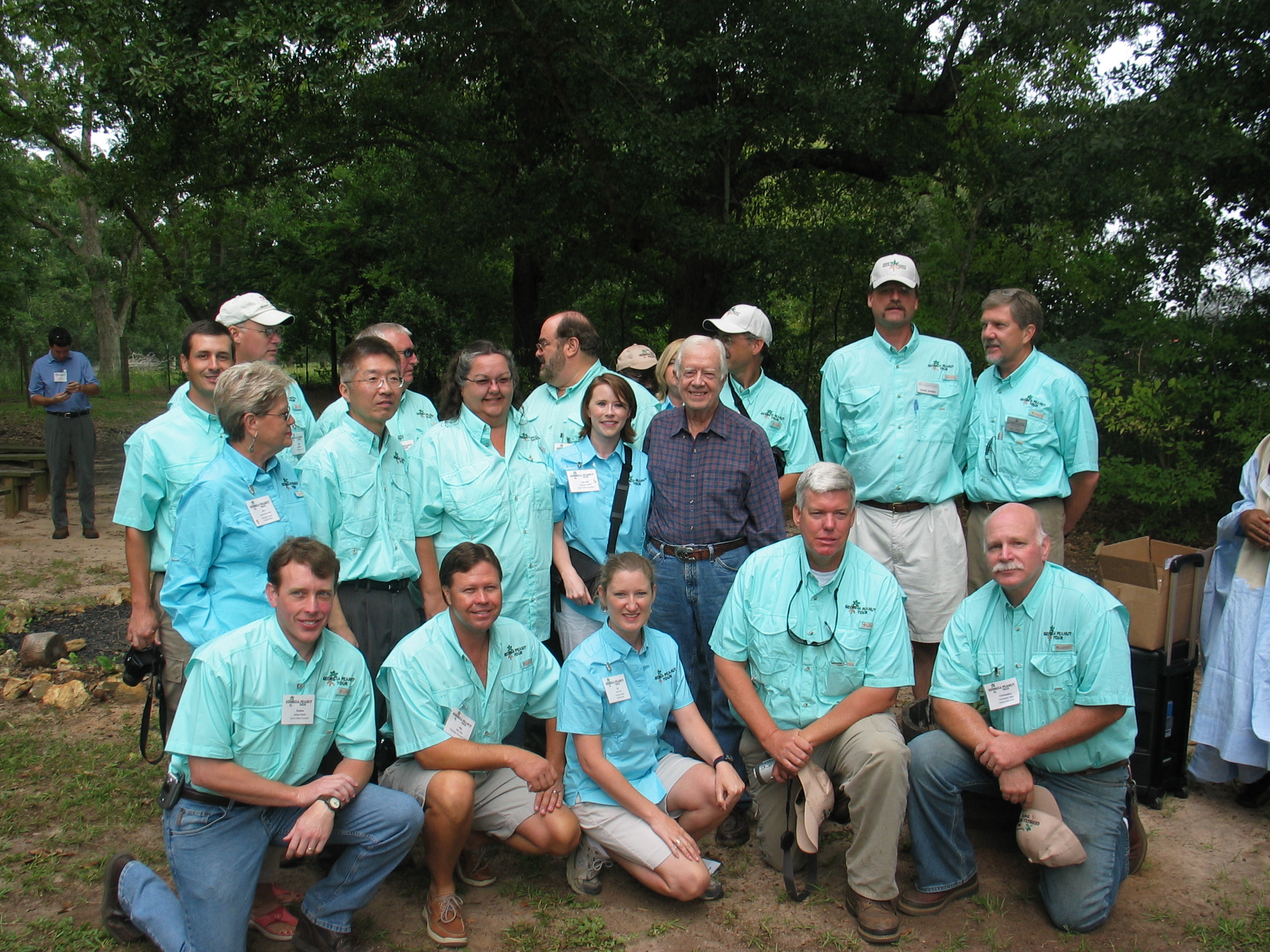The Georgia Peanut Tour host city this year is Douglas, Ga. Agriculture is very important to the economy in Coffee County. Eddie McGriff, Coffee County Extension Coordinator, says the peanut crop in the county looks very good although it all depends on the weather since they have such a late crop. Out of the 15,400 acres of peanuts planted in 2009, there is an estimated production rate of 25,410 tons. Farmers in Coffee County have to face production issues such as excessive rains during planting, which resulted in a very late planted crop, controlling pigweeds, and low prices. 40% of peanuts planted in the county are irrigated. Coffee County also grows cotton, corn, soybeans, blueberries, and hay.
Georgia Peanut Tour kicks off
The 23rd Annual Georgia Peanut Tour brings the latest information on peanuts while giving a first-hand view of industry infrastructure from production and handling to processing and utilization. The Hot Topics Seminar on Tuesday will include food safety experts discussing production practices, quality management, outbreak investigations, and more. The tour includes visits at farmers’ fields, research plots, a buying point, Federal- State inspection, an equipment dealer, a weather network station, and a shelling and storage facility as well as a peanut blanching facility. Demonstrations of determining optimum peanut maturity and an innovative new technology for evaluating pod moisture will also be observed.
Scott Tubbs, University of Georgia cropping systems agronomist, is serving as the 2009 chairman of the Georgia Peanut Tour.
2009 Tour Set For September
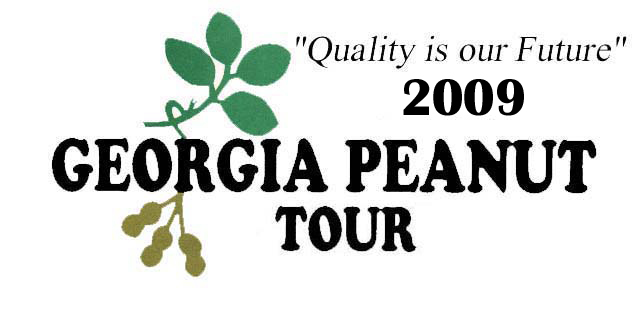 The Georgia Peanut Tour Committee has set September 15-17, 2009, as the dates for the 23rd Annual Georgia Peanut Tour. The Early Bird Hot Topics’ Seminar begins Tuesday, September 15, at 3:00 p.m. and will be held at the Holiday Inn Express in Douglas, Ga. The tour spotlights South Central Georgia’s peanut production area.
The Georgia Peanut Tour Committee has set September 15-17, 2009, as the dates for the 23rd Annual Georgia Peanut Tour. The Early Bird Hot Topics’ Seminar begins Tuesday, September 15, at 3:00 p.m. and will be held at the Holiday Inn Express in Douglas, Ga. The tour spotlights South Central Georgia’s peanut production area.
The tour includes a cross section of field conditions in South Central Georgia, peanut harvest clinics, production research at the University of Georgia Tifton Campus, peanut handling and grading facilities as well as a focus on biofuels, equipment and implements, trailers and dryer, dome storage and handling, shelling and blanching.
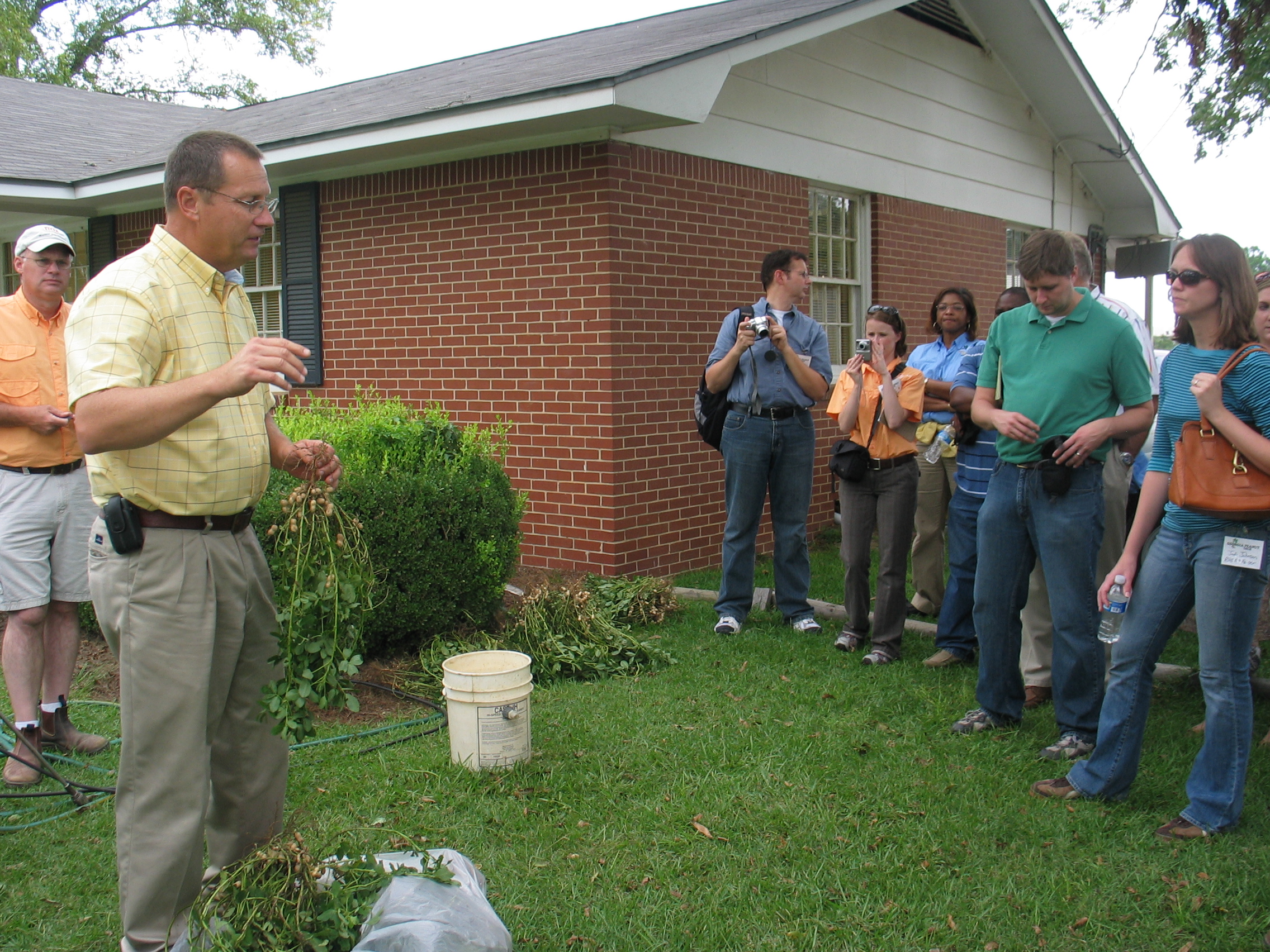 The registration fee is $35 per person, which includes all meals and reserved transportation during the tour. After Aug. 7, the registration increases to $45. For more information about the 23rd Annual Georgia Peanut Tour contact the Georgia Peanut Commission at (229) 386-3470 or tammy@gapeanuts.com. Tour information is also available at www.gapeanuts.com.
The registration fee is $35 per person, which includes all meals and reserved transportation during the tour. After Aug. 7, the registration increases to $45. For more information about the 23rd Annual Georgia Peanut Tour contact the Georgia Peanut Commission at (229) 386-3470 or tammy@gapeanuts.com. Tour information is also available at www.gapeanuts.com.
The Georgia Peanut Commission, University of Georgia-Tifton Campus and Griffin Campus, Southwest Research & Education Center, Attapulgus Research & Education Center, and the USDA Agricultural Research Service National Peanut Research Lab coordinate the tour.
2008 Peanut Tour Committee
The 2008 Peanut Tour Committee extends a thank you to everyone attending this year’s Georgia Peanut Tour. As soon as plans are ready for the 2009 tour then information will be posted on this blog.
Tour Committee & Organizers:
Stan Jones, Chairman
Scott Tubbs, Secretary
John Beasley
Emory Murphy
Tim Brenneman
Nathan Smith
Glen Harris Sandra McNeil
Chris Butts Billy Mills
Joy Carter Tim Williams
Alex Csinos Amanda Smith
Marcus Evans Albert Culbreath
Yen-Con Hung Bob Kemerait
Tammy Pate Joan Underwood
Peanut Tour Photo Albums
There are a few photo albums online of the 2008 Georgia Peanut Tour. Here’s a link to each one so you can check out the variety of photos taken at each tour stop.
Photo Album by Joy Carter, Georgia Peanut Commission
Photo Albums by Joel Paz, University of Georgia
Day 2 – Visit with President Jimmy Carter
Day 2 – Additional Tour Photos
Photo Album by Grant Tuttle, McKee Foods (Little Debbie Snacks)
Blog & Media Coverage
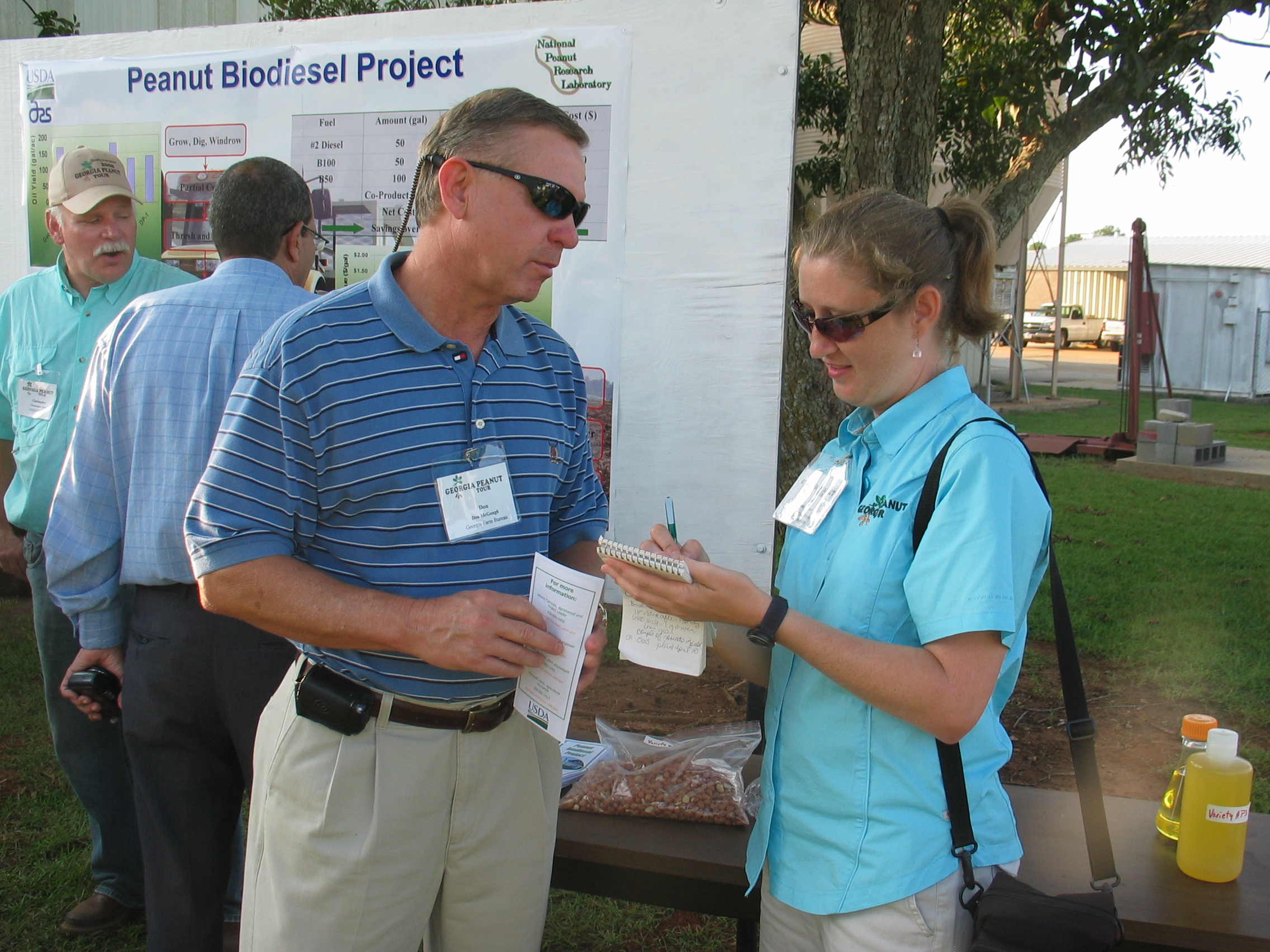
Joy Carter (right), Georgia Peanut Commission director of communications, interviews Don McGough, field services representative with Georgia Farm Bureau, on the Georgia Peanut Tour.
The 2008 Georgia Peanut Tour marks the first year of hosting a the tour blog covering all aspects of the three-day event. I have enjoyed loading all the many photos and posts from each stop on the tour and I hope the information has been beneficial to each of you reading this blog. If you are interested in receiving information on future peanut tours then be sure to post a comment to this blog post and send me your email. Throughout the tour there were also a variety of television & radio media coverage that came on the peanut tour. Thanks to Southeast Ag Net, the Georgia Farm Monitor, Fox 31 News and WALB News of Albany for covering this year’s Georgia Peanut Tour.
Georgia Farm Monitor News Story by Rick Treptow
Click on the “WEB Videos” icon on the left side of the page, then scroll down the list to the Sept. 27 show.
Southeast Ag Net by Julie McPeake
Georgia Peanut Commission Delivers Successful Tour
New Peanut Cultivars Aliviate Harvesting Logistics
Video – Fox 31 News
2008 Georgia Peanut Kicks Off in Cordele
By Jana Barnello
WALB News Story
Peanut Tour Spotlighting South Central Georgia
By Wainwright Jeffers
More Southern Food
 The last night of the Georgia Peanut Tour provided attendees with another view of Southern hospitality and cooking at Potter’s Community Center in Dougherty County, Ga. The community center is one of Dougherty County’s most cherished landmarks. The center is situated on approximately 50 acres in a plantation like setting. The American Peanut Shellers Association sponsored a reception held at the center. During the reception greetings were brought by Joe Campbell, president of the American Peanut Shellers Association and Armond Morris, chairman of the Georgia Peanut Commission. The dinner that night featured a low country boil prepared by Butch Griffin and the folks with Dow AgroSciences – Marvin Stewart and Al Wright. The dessert of course topped the night! Everyone on the tour got a big helping of Peanut Butter ‘n Chocolate Ice Cream or Reese’s® Peanut Butter Cup Ice Cream. What better way to end the tour than with ice cream!
The last night of the Georgia Peanut Tour provided attendees with another view of Southern hospitality and cooking at Potter’s Community Center in Dougherty County, Ga. The community center is one of Dougherty County’s most cherished landmarks. The center is situated on approximately 50 acres in a plantation like setting. The American Peanut Shellers Association sponsored a reception held at the center. During the reception greetings were brought by Joe Campbell, president of the American Peanut Shellers Association and Armond Morris, chairman of the Georgia Peanut Commission. The dinner that night featured a low country boil prepared by Butch Griffin and the folks with Dow AgroSciences – Marvin Stewart and Al Wright. The dessert of course topped the night! Everyone on the tour got a big helping of Peanut Butter ‘n Chocolate Ice Cream or Reese’s® Peanut Butter Cup Ice Cream. What better way to end the tour than with ice cream!
First Time Attendees on Tour
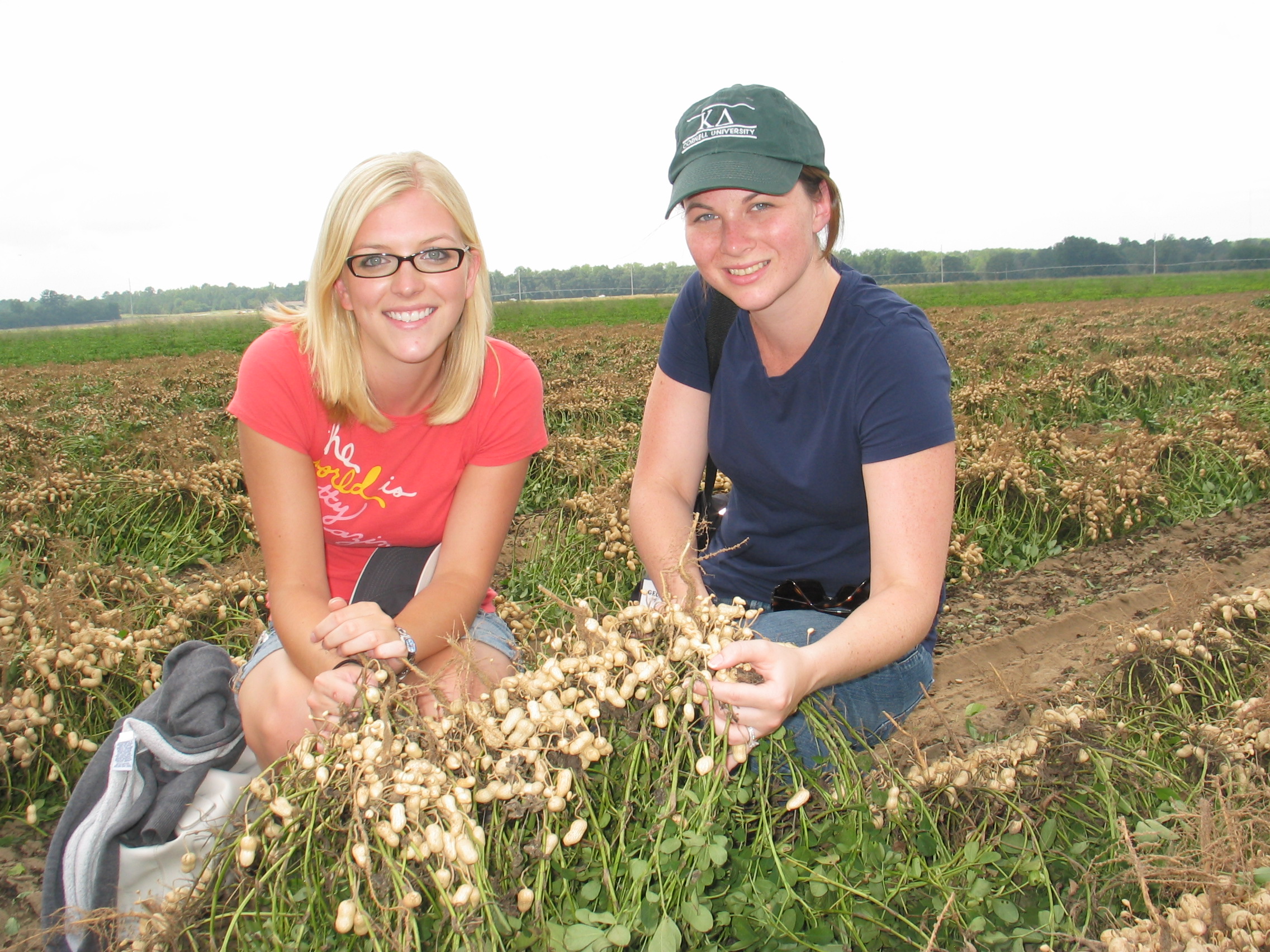 For many first time attendees on the Georgia Peanut Tour, the event provided them a better understanding of the entire peanut industry and issues farmers’ face year after year. Two of those first time attendees this year had never even stepped into a peanut field before coming on the tour. Emily Rudolph and Megan Birkheimer with Kraft Foods are very grateful for the opportunity to attend the Georgia Peanut Tour. According to Emily, she had no clue all of the steps before Kraft Foods receives the peanuts. She had never seen peanuts in the field growing and she thoroughly enjoyed learning about all the production issues that farmers’ face on a daily basis. The information gained has been very useful and the contacts she has made within the industry will be an asset to her job. Emily is a product developer with Planters and she grew up in Wisconsin.
For many first time attendees on the Georgia Peanut Tour, the event provided them a better understanding of the entire peanut industry and issues farmers’ face year after year. Two of those first time attendees this year had never even stepped into a peanut field before coming on the tour. Emily Rudolph and Megan Birkheimer with Kraft Foods are very grateful for the opportunity to attend the Georgia Peanut Tour. According to Emily, she had no clue all of the steps before Kraft Foods receives the peanuts. She had never seen peanuts in the field growing and she thoroughly enjoyed learning about all the production issues that farmers’ face on a daily basis. The information gained has been very useful and the contacts she has made within the industry will be an asset to her job. Emily is a product developer with Planters and she grew up in Wisconsin.
Meghan is also a product developer with Planters and focuses on all natural foods. She enjoyed learning about the entire process and putting faces to those steps. The tour helped her to realize all the concerns that each person has within their segment of the peanut industry. She also did not know all the steps from farmer, to buying point and to sheller before Kraft Foods receives the peanut product. For this New Jersey girl, the tour provided her the opportunity to visit a working family farm. Meghan says, the tour is like going from charts, photos and diagrams to actually digging in the dirt.
Randolph & Doughtery County Agricultural Update
 Randolph County – Buster Hadock, Randolph County Extension Agent, provided an update to the Georgia Peanut Tour attendees. Randolph County farmers planted 12,000 acres of peanuts this year and Haddock estimates production at 20,700. This year farmers have been faced with increasing fuel costs, weed problems and drought. In addition to peanuts, farmers in Randolph County also grow corn, cotton, soybeans, wheat and grain sorghum. The majority of peanut acreage in Randolph County is irrigated and the peanuts are looking good, Haddock says.
Randolph County – Buster Hadock, Randolph County Extension Agent, provided an update to the Georgia Peanut Tour attendees. Randolph County farmers planted 12,000 acres of peanuts this year and Haddock estimates production at 20,700. This year farmers have been faced with increasing fuel costs, weed problems and drought. In addition to peanuts, farmers in Randolph County also grow corn, cotton, soybeans, wheat and grain sorghum. The majority of peanut acreage in Randolph County is irrigated and the peanuts are looking good, Haddock says.
 Dougherty County – Rad Yager, Dougherty County Extension Agent, visited with the Georgia Peanut Tour at the Potter’s (South Dougherty Community Center). Yager estimates that Dougherty County will produce 7,000 tons of peanuts on 3,500 acres in 2008. Eighty-five percent of the peanuts are irrigated and Yager says the entire crop looks good. Tropical storm Fay gave the dry land fields some much needed rain at the end of August to finish out their water needs and the irrigated fields look extremley healthy. Farmers in Dougherty County also grow corn and cotton but the county is most famous for their pecan and quail production. Farmers in the county produce 18% of Georgia’s pecan crop each year and Georgia is the leading producer of pecans in the U.S. When farmers in the area finish harvesting these crops they turn to hunting quail on the world famous piney wood plantations of Dougherty County. The season runs from October through March and the hunters look forward to seeing many bobwhites pointed and retrieved by some of the best “bird dogs” anywhere.
Dougherty County – Rad Yager, Dougherty County Extension Agent, visited with the Georgia Peanut Tour at the Potter’s (South Dougherty Community Center). Yager estimates that Dougherty County will produce 7,000 tons of peanuts on 3,500 acres in 2008. Eighty-five percent of the peanuts are irrigated and Yager says the entire crop looks good. Tropical storm Fay gave the dry land fields some much needed rain at the end of August to finish out their water needs and the irrigated fields look extremley healthy. Farmers in Dougherty County also grow corn and cotton but the county is most famous for their pecan and quail production. Farmers in the county produce 18% of Georgia’s pecan crop each year and Georgia is the leading producer of pecans in the U.S. When farmers in the area finish harvesting these crops they turn to hunting quail on the world famous piney wood plantations of Dougherty County. The season runs from October through March and the hunters look forward to seeing many bobwhites pointed and retrieved by some of the best “bird dogs” anywhere.
Tour visits National Peanut Research Lab
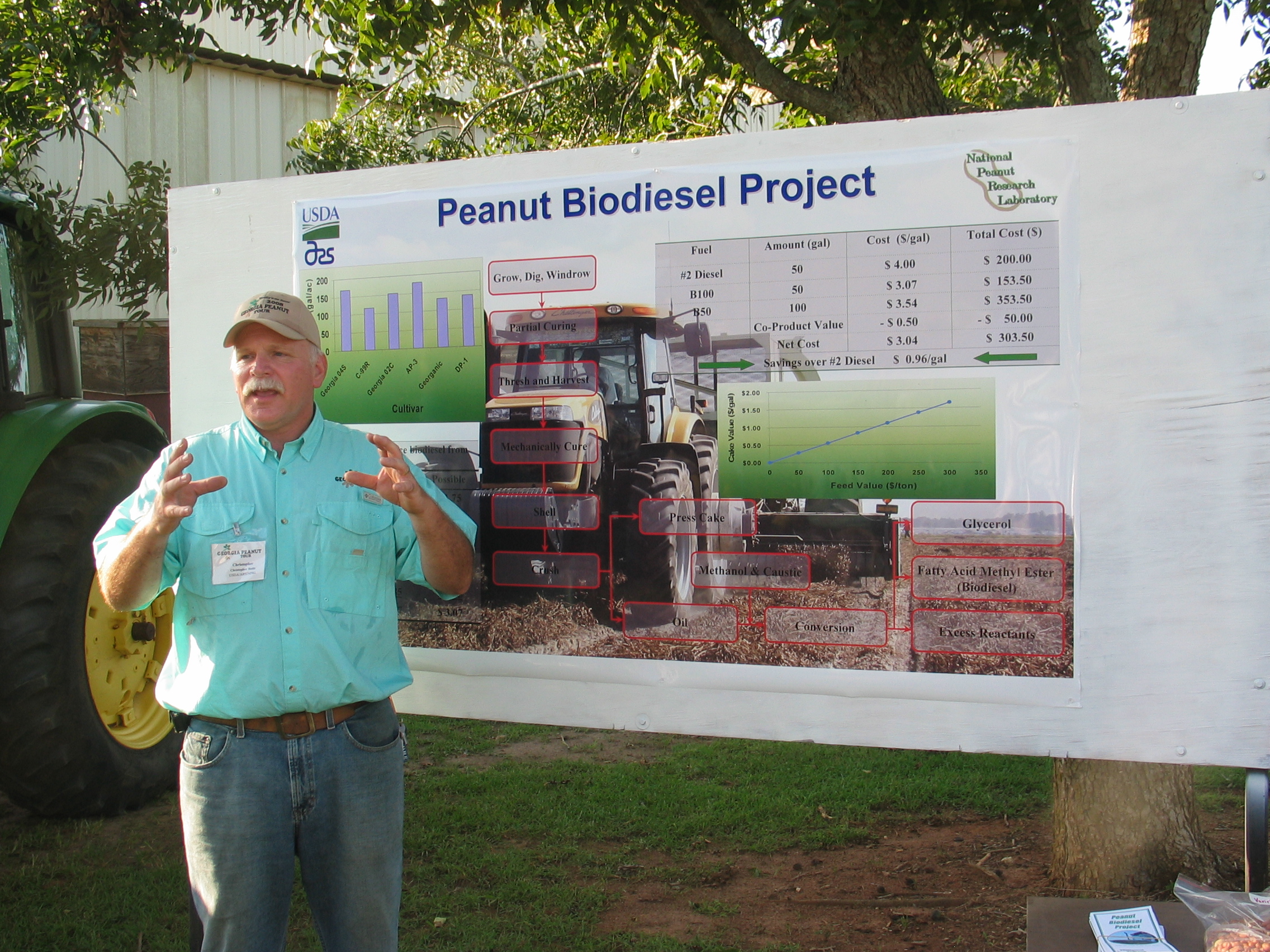 The Georgia Peanut Tour visited the National Peanut Research Laboratory in Dawson, Ga. This labratory was established in 1965 for the purpose of improving farming practices. Since that time, scientists have studied a variety of factors involved in peanut production from better planting practices to better irrigation practices. Scientists have also researched ways to improve harvesting methods, storage methods, and the better use of environmental and financial resources. Today, Scientists continue to research ways for farmers to more efficiently produce a high quality crop. To learn more about the National Peanut Research Laboratory vist them on their website.
The Georgia Peanut Tour visited the National Peanut Research Laboratory in Dawson, Ga. This labratory was established in 1965 for the purpose of improving farming practices. Since that time, scientists have studied a variety of factors involved in peanut production from better planting practices to better irrigation practices. Scientists have also researched ways to improve harvesting methods, storage methods, and the better use of environmental and financial resources. Today, Scientists continue to research ways for farmers to more efficiently produce a high quality crop. To learn more about the National Peanut Research Laboratory vist them on their website.
While at the National Peanut Research Lab Chris Butts, agricultural engineer at NPRL, told the Georgia Peanut Group about the Peanut Biodiesel Project. This project is studying the potential for farmers to make their own biodiesel with crops they have grown and for on-farm use. Peanuts have the highest oil yield potential in the Southeastern U.S. when comparing it to canola or soybeans. Oil feedstocks are cost prohibitive to buy so researchers are looking into the feasibility of growing your own crop for oil. In order to produce the cheapest oil possible, 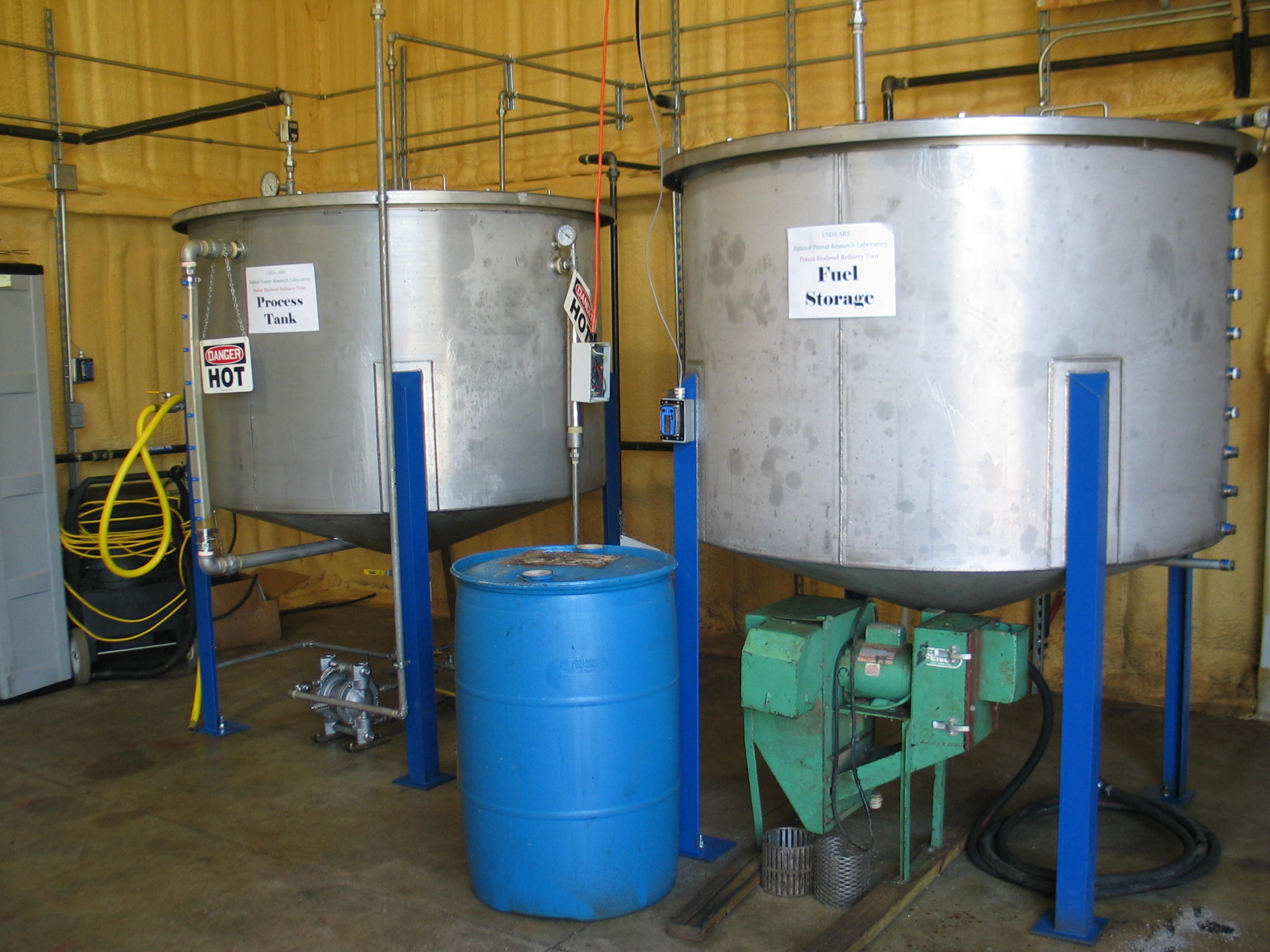 researchers recommend using a low input production system which includes peanut varieties with high disease resistance, high oil content and reduce or eliminate fungicide applications. A one ton yield with low input production costs can make on-farm fuel economically feasible. The one ton yield would produce approximately 100 gallons biodiesel and 800 pounds of meal which has a high feed value. The research team of Butts, Wilson Faircloth and Diane Rowland have also tested 40 plus peanut varieties in low-input studies in Georgia, Florida and Alabama. The varieties yielding above 100 gallons of fuel per acre are Georgia-03L, DP-1 and Georganic. The peanuts are tested for yield, oil yield, oil quality and biodiesel quality. Another aspect of the research project is the biodiesel refinery. The research and demonstration refinery has a 25,000 gallon per year capacity and the biodiesel made at the lab fuels the tractor fleet at NPRL. In an earlier post Wilson Faircloth explained how crop rotations are an important factor when considering the entire operation and making biodiesel for on-farm use. Click here to read the post.
researchers recommend using a low input production system which includes peanut varieties with high disease resistance, high oil content and reduce or eliminate fungicide applications. A one ton yield with low input production costs can make on-farm fuel economically feasible. The one ton yield would produce approximately 100 gallons biodiesel and 800 pounds of meal which has a high feed value. The research team of Butts, Wilson Faircloth and Diane Rowland have also tested 40 plus peanut varieties in low-input studies in Georgia, Florida and Alabama. The varieties yielding above 100 gallons of fuel per acre are Georgia-03L, DP-1 and Georganic. The peanuts are tested for yield, oil yield, oil quality and biodiesel quality. Another aspect of the research project is the biodiesel refinery. The research and demonstration refinery has a 25,000 gallon per year capacity and the biodiesel made at the lab fuels the tractor fleet at NPRL. In an earlier post Wilson Faircloth explained how crop rotations are an important factor when considering the entire operation and making biodiesel for on-farm use. Click here to read the post.

